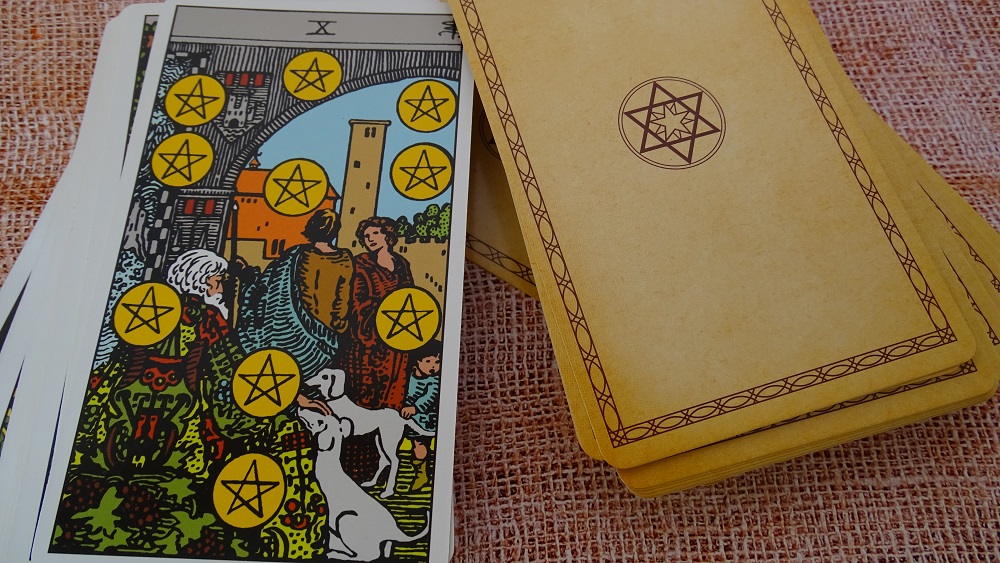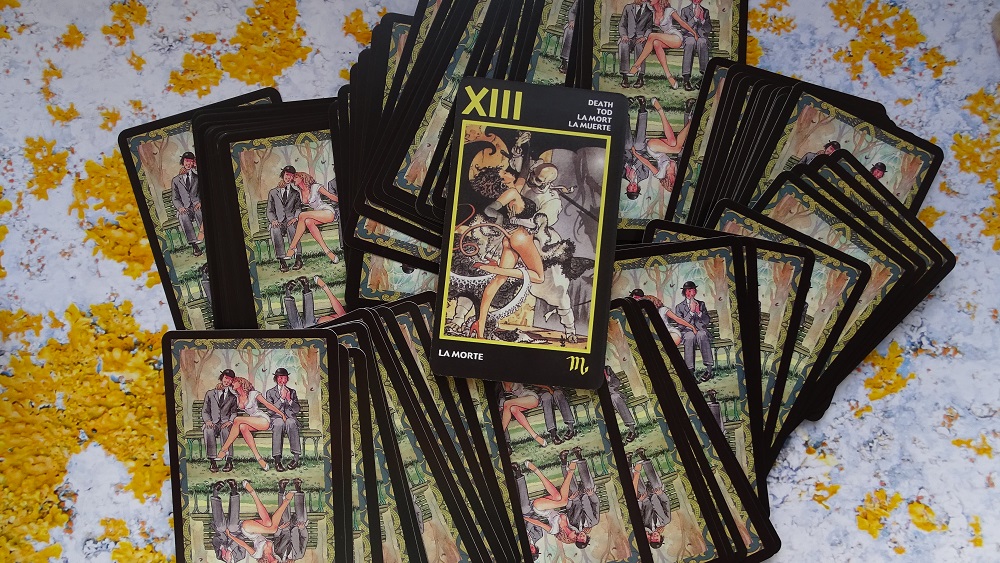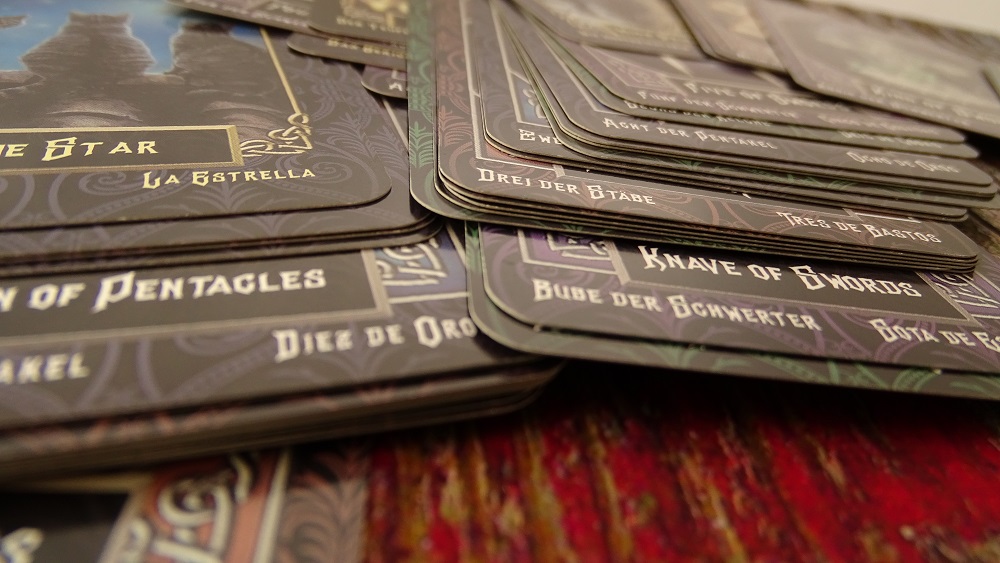This is a Brief History of Tarot Cards
The tarot is an independent system for predicting the future and for meditations. The true history of tarot cards is more complex than usualy considered.
Many mystical schools took part in the formation of it, including Hermeticism, which is ancient esoteric teaching based on the work of Hermes Trismegistus “The Emerald Tablet”. The work formed the basis of the philosophy of many knightly monastic and mystical orders of the Middle Ages, although the church called the knowledge of the ancient Roman and Greek mysteries a temptation and repeatedly made attempts to oust ancient wisdom from human minds.
The history of the emergence of Tarot cards is rooted in antiquity. There are many legends about their creation. One of them tells about the Egyptian priests who possessed secret knowledge and wanted to pass it on to future generations. To do this, they encrypted the truth using numbers, colors, and symbols in the paintings and placed them in the underground gallery of the temple. Pupils, as they acquired knowledge, moved from hall to hall, each of which was decorated with an image symbolizing the knowledge gained.
Another legend takes us to the Moroccan city of Fez. There about 1200 savants from all over the world gathered for an important mission. At first, they wanted to create a universal esoteric language in order to better understand each other and transfer knowledge. However, in the end, their goal was to create a source of information that would contain all the wisdom of the world. This is how the tarot cards appeared. A lesser-known legend tells of a ruler who suffered from dementia. One of the court clergies came up with and drew various pictures that most fully characterized the main life situations in order to return the mind to the monarch with the help of a system of exercises.
Many researchers have argued that the Tarot cards passed from the ancient Egyptians to the Hellenes, but there is still no evidence of this. Nevertheless, the Roman philosopher, astrologer, and mystic Iamblichus believed that images were used in the rituals of the mystical Egyptian initiation, very similar in meaning to the senior arcana of the Tarot. The paintings were placed in pairs on the walls of a long corridor in an ancient temple, which could only be entered after a series of difficult tests. The disciple, passing the initiation, slowly walked past the paintings, listening to the instructions of the priest. It was assumed that the neophyte should comprehend the deeper meaning of the symbols of each image through meditation and reflection.
In the first half of the 15th century, the Italian artist Bonifacio Bembo drew a deck of Visconti – Sforza cards. This name was preceded by three events. The aristocrat Francesco Sforza was married to Bianca Visconti, a little later received the title of Duke of Milan, and a few years later there was a solemn celebration of a decade of legalized relations between Bianca and Francesco. It is still unknown to which event the creation of the deck was timed, but it was she who became the prototype of the Tarot decks.
At the end of the 19th century, the itinerant preacher Curt de Gebelin wrote an essay “An Enquiry into the Origin of the Game of Tharot”, which was part of the encyclopedia “The Primitive World, Its Analysis and Comparison with the Modern World.” Major Arcana Tarot correlates with the mystical tradition of Kabbalah. According to esoteric ideas, God created many endless spheres: the material and divine worlds. The schematic representation of the result of divine creation is called the Tree of Life. It consists of 10 spheres, which are located and interconnected in a special way.
In 1856, the French occultist Eliphas Levi first drew attention to the fact that the spheres of the Tree of Life are connected by 22 lines. In the book “The Teaching and Ritual of Higher Magic” he suggested that this may correspond to the 22 major arcana from the Tarot deck. Levi’s follower Gerard Ancausse, known under the pseudonym Papus, published the Gypsy Tarot in 1889. It featured 22 major arcana, painted by the French artist and freemason Oswald Wirth. Later, the deck was called the Marseille Tarot, and the system of its interpretation was French. Its distinctive features are the absence of plot images on the minor arcana; the card Judgement was assigned number 8, the card Strenght – 11, while The Fool was placed between card 20 The World and 21 Judgement. In 1909, Papus published the book “Predictive Tarot or the key to card fortune-telling”, equipped with a black and white deck, the cards of which the reader was asked to cut out and stick on cardboard.
Samuel Mathers, leader of the Rosicrucian Order, continued to search for the relationship between the Kabbalah and the Tarot. At the end of the 19th century, he, together with his wife, created the deck of the Order of the Golden Dawn and published a small treatise “The Tarot: Its Occult Signification, Use in Fortune-Telling, and Method of Play”. Mathers argued that the 10 Sephiroth, or elements of the universe, together with the 22 letters of Hebrew, represented by the senior arcana of the Tarot, are directions to the attainment of the highest wisdom. Each of the 10 Sephiroth is associated with a specific number and letter. There are special tables and rules for translating names into Hebrew and calculating the number that affects a person. A description of this can be found in the Book of Creation, an ancient mystical treatise with commentary on the opening chapters of the “Book of Genesis”.
Aleister Crowley
Aleister Crowley, an English occultist and kabbalist, a member of the Order of the Golden Dawn, and author of numerous mystical works at the beginning of the 20th century, together with the artist Frida Harris, created the Thot Tarot deck and published the treatise “777”, in which he gave a numerological characterization of the Tarot cards.
Arthur Waite
Arthur Waite created a revolution in the tarot world. Arthur spent his whole life researching occult symbols and magic rituals of different peoples. Thanks to this, he was deeply imbued with this topic and was able to create a unique deck of cards, sketches for which his girlfriend and active member of the order, Pamela Coleman Smith, helped to create. This happened in 1909, which became revolutionary for tarology.
In the modern world, fortune-tellers, psychics, and tarologists in their practice can use various decks depending on skills and knowledge. This includes both original (classic) decks and modern ones that were created on their basis.
Despite such a huge range of choices, the popularity of Crowley and Waite decks is unshakable. But this does not mean that it will always be so. It is quite possible that after a while there will be another revolutionary upheaval in this area, which will change the attitude of most people toward predictions.




This article offers a captivating journey through the rich history of Tarot cards, tracing their origins from medieval Europe to their modern-day interpretations. It provides valuable insights into the evolution of Tarot symbolism and its cultural significance, shedding light on the diverse influences that have shaped Tarot decks over the centuries. Whether you’re a Tarot enthusiast or simply curious about the origins of this mystical practice, this article provides a fascinating exploration of Tarot’s enduring legacy.
Thank you for your insightful comment!